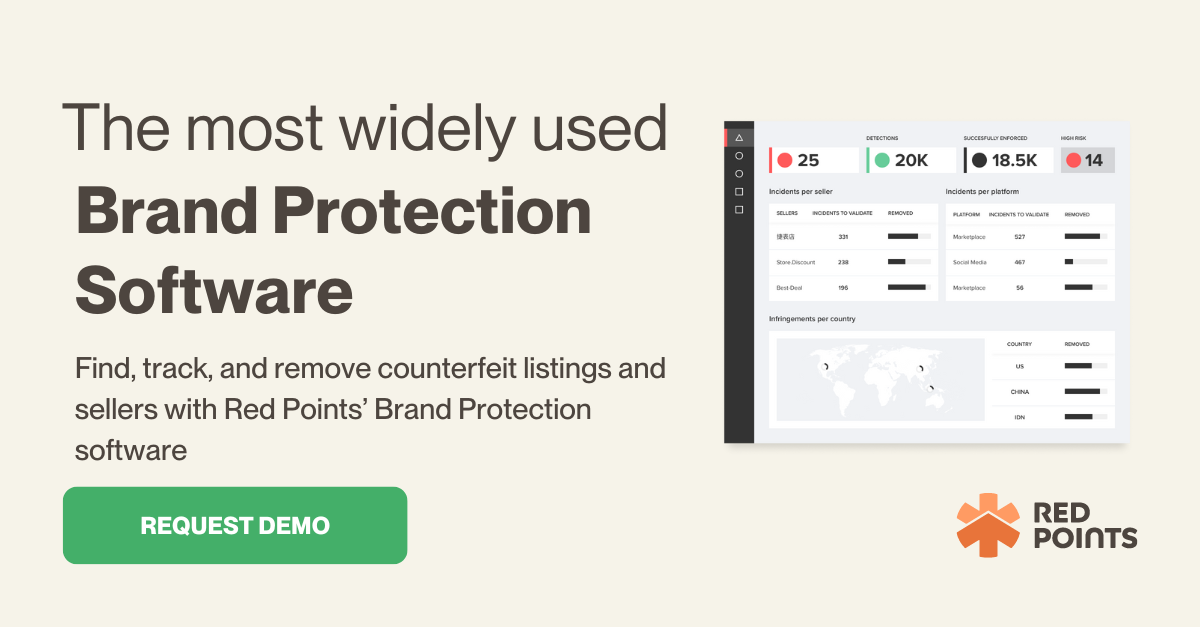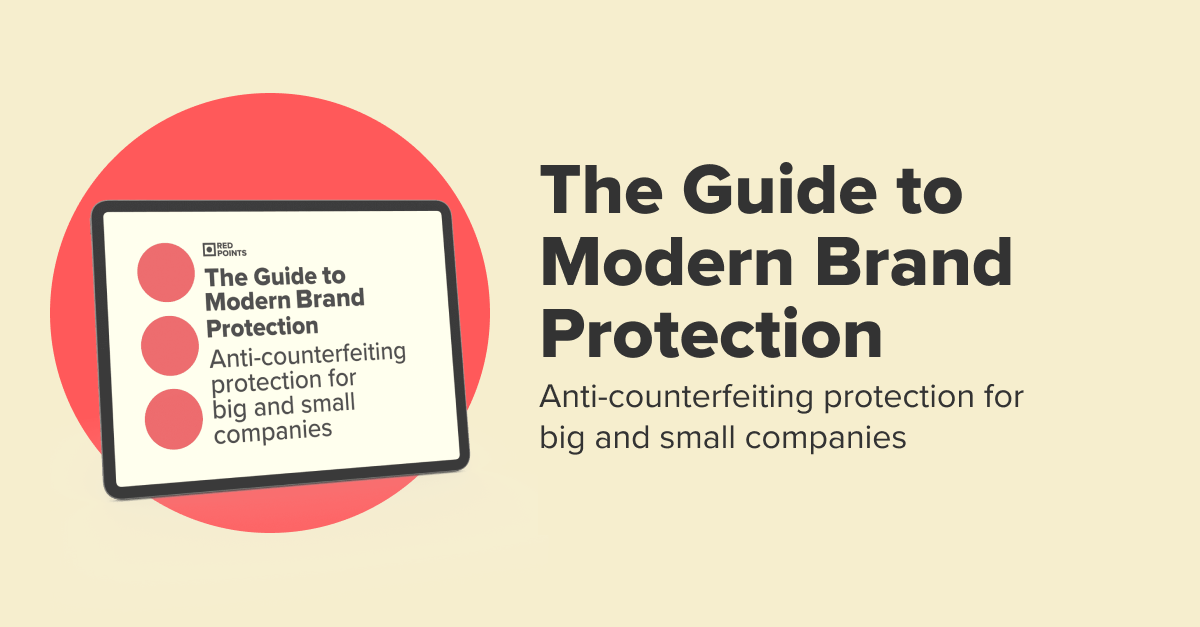In this digital age, maintaining a positive brand reputation is essential for success.
Customers will only purchase products or services from businesses they perceive as trustworthy or credible, but we all know how reputation can be very difficult and time-consuming to build but takes seconds to destroy.
It’s also worth noting that in a digital environment, there are so many more variables a business will need to take into account when it comes to maintaining a reputation: negative reviews (whether from legitimate customers or malicious parties), breaches of cyberattacks, black campaigns by competitors, and so on.
In short, maintaining a positive digital brand reputation can be easier said than done. Not only are businesses required to maintain a strong online presence, but they also need to control all the external threats that may affect their digital brand reputation.
This is where the importance of having a comprehensive digital brand protection strategy comes in, and we’ll discuss all you need to know about it in this guide.
In this ultimate guide to digital brand protection, you’ll learn about:
- What is digital brand protection?
- Notable threats that may affect your digital brand reputation
- Best practices on how to protect your brand online
- Actionable tips on performing digital brand protection
- How to take down fake and malicious websites
And more.
Without further ado, let us begin this guide right away.

What is digital brand protection?
Digital brand protection, simply put, is all sorts of efforts a business takes to protect its brand and all intellectual properties (IPs) associated with the brand.
Digital brand protection especially focuses on identifying unauthorized use of your brand name, logo, or any type of content related to your brand and taking the appropriate action. In short, digital brand protection is about stopping any abuse of your brand elements online, as well as other types of IPs related to the business such as trademarks, patents, design rights, and so on.
The most basic (and important) foundation of implementing digital brand protection is to register a trademark for your brand. A registered trademark will provide the business with enough grounds to pursue legal actions against the unauthorized use of your brand elements.
Why is digital brand protection important?
Digital brand protection is important for protecting your company’s image, credibility, and overall value. Failure of implementing digital brand protection can result in the loss of revenue from the company, as well as potential legal repercussions.
It’s crucial to understand that in this digital age, your business’s online presence and perceived credibility will affect your prospective customers’ purchase decisions: they’ll only purchase products or services from businesses they perceive as trustworthy. They will check online reviews and testimonies, and if your brand has a weak online presence and/or tarnished digital reputation, they won’t buy from you.
In short, if your brand is compromised online, it will affect your business’s revenue and growth.
Couple this phenomenon with the fact that there are now various forms of brand abuse threats performed by cybercriminals and malicious actors, and digital brand protection is increasingly becoming critical for any business with a digital presence.
Below, we will discuss these brand abuse threats.
Brand abuse threats and their potential effects
First, what is brand abuse?
Simply put, brand abuse refers to the act of an external party (or parties) performing unauthorized use of a brand’s intellectual property for malicious purposes.
Brand abuse attacks can come in many different ways with many different methods and technologies, but here are some of the most important ones:
Fake/illegitimate website
Malicious parties can create rogue websites using your brand’s intellectual properties for malicious purposes. This type of brand abuse can come in several different sub-types:
- Cybersquatting: in this type of attack, a malicious party claims domain names related to your brand (before you can claim it) to take advantage of your brand’s trademarks.
- Typosquatting: this type of attack relies on common mistakes of internet users in making typos (typing mistakes) while typing website URLs. For example, in impersonating PayPal’s website, a malicious party may use “PayPal” (with a capital i) as its domain name in an attempt to fool users.
- Imitation sites: in this type of brand abuse attack, the attacker builds a website that is very similar to your own, aiming to pass itself off as your authentic website.
Since in this digital age, a website plays an important role in establishing the business’s first impression and credibility, rogue websites can cause significant damage to a company’s reputation, often long-term or even permanent, which can ultimately lead to a significant loss in revenue and profits.
Counterfeit products
In this type of brand abuse attempt, a malicious party creates an imitation of an authentic product (or products) from an established brand. For example, the criminal may create a fake product using your logo that looks very similar to yours without permission, fooling your customers to buy this fake product instead.
What’s common is that although the fake product looks similar to yours, the quality is much lower (so they can make profits from it). As a result, customers who bought the fake product will be disappointed and will blame your business instead, potentially ruining your reputation.
Counterfeiting is a major problem across many different industries, and the global counterfeiting and piracy industry is expected to be worth more than $4 trillion in 2022.
Counterfeiting can also happen to digital products or even services, so preventing and taking action against counterfeiting should also be a part of any digital brand protection strategy.
Trademark squatting
This type of brand abuse happens when malicious parties register trademarks of legitimate brands without their permission and then can monetize the situation, for example by forcing the brand to buy the trademark from them.
This type of attack can come in many different ways, for example registering trademarks in countries where established brands have yet to register their trademarks
Copyright piracy
Brand abusers may perform various forms of copyright infringement for various malicious purposes. For example, a malicious party may copy a product’s legitimate logo and use it on their (fake) product to legitimize this fake product.
Of course, for companies creating and selling products that rely on copyright (i.e., books, songs, art), copyright piracy can be an even bigger issue. Having a comprehensive brand protection strategy is crucial for combating copyright piracy.
Social media impersonation
Due to the open nature of social media, various forms of brand abuse and especially counterfeiting is rapidly increasing on social media, and are becoming a major challenge when it comes to digital brand protection.
For example, malicious parties can create new social media accounts while impersonating legitimate brands, and then use these fake profiles to sell fake products, trick users to click on malicious links and get their devices infected by malware, send users to scam/phishing pages, and so on.
Potential impacts of brand abuse
These various forms of brand abuse attacks can have numerous negative impacts, and may often be more damaging than what’s understood by the affected company.
The impacts of brand abuse attempts can be severe and long-term, or even permanent, and here are some of the most dangerous ones:
- Lower revenue: the spread of counterfeit products, for example, can hurt a company’s sales. Reputational damage caused by other forms of brand abuse attacks (i.e., rogue websites sending customers to phishing pages) can also lead to falling sales.
- Reputational damage: reputations can take years and even decades to build, and yet can be destroyed in seconds. Without a clear and comprehensive brand protection strategy, a company’s reputation is always at risk, and what’s worse, the reputational damage can be very difficult to mend. When your customers perceive your company as one with a bad reputation, they may avoid your brand and may choose your competitors instead.
- Winning back customers: when, for example, your customers have purchased a knockoff of your product and are disappointed, winning back their trust can be very difficult, time-consuming, and expensive.
- Expensive fight against counterfeits: unfortunately, protecting your brand from counterfeits and other brand abuse attempts can be very expensive and time-consuming and the effort may end up drawing resources from other departments that’d otherwise be used for growing your business. Hiring lawyers to combat counterfeits, for example, can be very expensive, and yet is often to no avail.
- Losing trust with partners and sponsors: damages caused by brand abuse attempts can also cause businesses to lose trust with long-term partners. For example, if you have exclusive rights with other businesses, the existence of counterfeit products may cause these partners to feel that their rights are being betrayed and may blame your brand instead.
Digital brand protection: best practices
Ultimately, digital brand protection is about reducing the risk and preventing malicious parties from abusing your brand online, and the most important thing to do for this purpose is to establish control of your brand’s presence online as much as possible.
Here are some best practices you should do for the purpose of maintaining control over your brand:
1. Have a unique brand identity as your foundation
No matter what other efforts you’ll put to protect your brand online, it won’t bring too much difference if your brand elements and IPs are not unique/distinctive enough in the first place. The more unique your brand elements are, the easier it will be to identify brand abuse and take the necessary action as soon as possible.
2. Make sure to register copyrights, trademarks, and patents accordingly
As soon as possible, register all applicable brand elements (names, logos, etc.) and their variants to the relevant bodies. In the U.S., for example, you’ll need to register your brand with the U.S. Patent and Trademark Office. Also, whenever you’ve made changes to your brand elements, update your registrations as soon as possible.
3. Secure your digital real estate
In this digital age, domain names, social media handles, and profiles on relevant sites/applications/platforms should be considered your valuable digital real estate, and you should prioritize securing them as early as possible.
Start by registering any domain name you plan to use (with your brand name and related phrases.) You might want to register on multiple top-level domains (i.e., .com, .net, .us, .biz, and so on.) Create brand accounts on relevant social networks and platforms, and regularly monitor the trends so you can claim accounts on new, rising platforms before someone else can.
4. Establish a monitoring system
Everybody from all around the world can access the internet. So no matter how well you’ve established preventive measures to protect your brand’s digital assets and IPs, there’ll always be new malicious parties attempting to impersonate you and abuse your brand in one way or another.
This is why it’s also important to establish a working monitoring system to identify new threats in real time. There are various AI-based, machine learning tools that can help you to do this, but the best approach is to partner with digital brand management and revenue recovery agencies to continuously protect your brand from impersonations, counterfeiting, piracy, and other forms of brand abuse.
5. Develop a response plan
The thing about brand abuse is that as soon as you’ve identified a brand abuse attempt, it’s often already too late.
With that being said, it’s very important to act as quickly as you can to mitigate the damage, so you’ll need to preemptively develop response plans for different scenarios that may arise. You may need different response plans for different social networks or platforms, as well as for different methods of impersonation. Again, working with an experienced vendor like Red Points with adequate expertise in detecting and mitigating online brand impersonations is typically the most secure approach.
6. Establish NDAs with partners
For brands with patent-protected processes, designs, and products, protecting your confidential information when sharing it with partners is a must. Before agreeing to work with other companies, make sure to develop a comprehensive non-disclosure agreement (NDA) in writing, and get your prospective partner to sign it.
It’s better to be safe than sorry, and always strive to protect your confidential information from all external parties, or else you can put your brand at risk.
7. Continuously educate your customers
Customer education is an important, but often overlooked aspect of digital brand protection, which can benefit your business in two different ways. First, educating your customers will help them in recognizing the differences between your legitimate IPs, products, assets, and imitation ones, so they can avoid being tricked by counterfeiters.
On the other hand, you should also educate your customers about the potential harms of fake products and counterfeit assets, which will make them less likely to look for fake products.
How Red Points Brand Protection service can protect your IPs
Working with Red Points will protect your digital brand presence and intellectual properties in four core processes:
- Detection
- Validation
- Enforcement
- Reporting
1. Detection
Red Points will monitor the internet in real-time in an attempt to find brand abuse attempts. This can include identifying a fake website impersonating your legitimate website, counterfeit products listed on online marketplaces, fake social media profiles impersonating your business, and other forms of abuse.
2. Validation
The next step in the data protection process is validating the existence of brand abuse or infringement, as well as measuring the severity of the threat.
The validation phase is crucial to prevent both false positives (mistakenly identifying legitimate companies as impersonators) and false negatives (impersonators identified as legitimate IP owners.) This is important not only to ensure time and cost-efficiency but also to avoid potential legal repercussions.
3. Enforcement
Arguably the most important and challenging phase, this step is about taking the necessary action to eliminate brand abuse and/or infringement.
The actual actions taken can vary depending on the type of infringement/abuse and the platform where infringements occur. For example, if the infringement comes in the form of a fake website, then specific actions will be taken to take down the fake/illegitimate website. On the other hand, different actions may be taken to take down fake accounts on Instagram or other social networks.
4. Reporting
The final phase of brand protection is to create and deliver comprehensive reports about the identified and mitigated infringements and brand abuse attempts. These reports may be required to maintain a comprehensive audit trail in order to stay compliant with relevant regulations, but the client can also use the information within the reports as valuable insights to improve its own digital brand protection strategy and to stay aware of the status of its IPs online.
In practice, these four steps are achieved via Red Points’ brand protection software solution that offers comprehensive digital brand protection in four key areas;
- Keyword Monitoring
Cybercriminals often rely on SEO to make sure their counterfeit product listings, rogue websites, or other impersonated brand elements appear in the search engines so potential victims can stumble upon them.
With that being said, a keyword monitoring tool capable of detecting content that contains specific keywords (i.e., your brand name) is very important in quickly identifying and mitigating these threats.
Counterfeiters can continuously change and update their keywords when listing fake products, so without a capable real-time monitoring solution, keeping up with them can be very challenging, if not impossible.
- Machine learning
Machine learning is a type of AI technology that allows a ‘machine’ (I.e., a computer program) to gather data and reprogram itself to be better at identifying patterns and correlations in data.
Machine learning allows Red Points’ software solution to be more effective in recognizing infringement and brand abuse threats and perform real-time protection of your brand online, including the detection of brand new threats that may be unrecognizable by traditional protection software.
- Image recognition and optical character recognition (OCR)
Digital assets don’t always come in searchable text forms, but nowadays can come in various formats like photos, infographics, and even videos. This is why having a capable image recognition technology is important in order to quickly identify impersonations and infringements in various formats.
There are different forms of image recognition technologies available with varying complexities: from standard photo recognition that can analyze and find matching images to advanced optical character recognition that can recognize texts and objects within photos and videos.
- Intuitive interface
A good digital brand protection software solution must be easy to use with a seamless user experience while offering a robust set of features.
If a solution requires the business (the brand) to spend hours or even days learning about the interface, then the brand might as well hire a team of lawyers instead. It’s crucial to remember that the purpose of digital brand protection is to eliminate the cost and time needed to employ legal personnel, so a seamless user experience is a must.
What’s next
If your business has any online presence and if you sell a trademarked product, then you are always at risk of counterfeiting, infringement, and other forms of brand abuse.
If that’s the case, you should definitely consider establishing a comprehensive digital brand protection strategy to protect your brand’s integrity, as well as to protect your business from potential legal repercussions and losses in money and resources.
Protecting your credibility and managing the risks associated with brand integrity will ultimately contribute to your business’s bottom line: by building and maintaining trust with your customers, you can keep them as loyal customers and grow your business.






